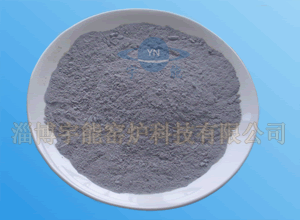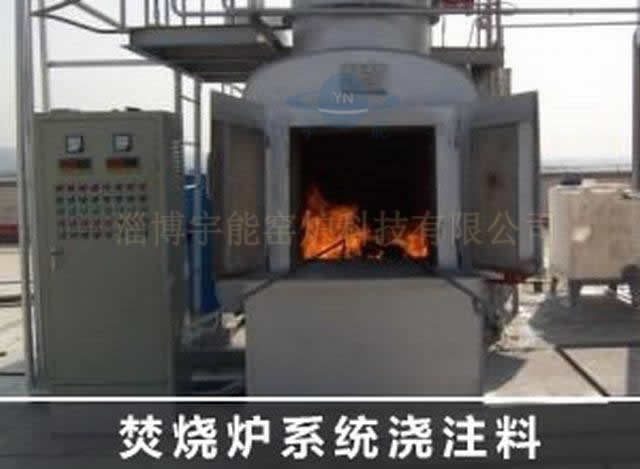Zibo Yunneng Kiln Technology Co. Ltd. Zibo Yunneng Kiln Technology Co. Ltd.
Free delivery samples
high quality assurance
Engineer's door-to-door guidance
lifelong technical support
Contact us+86159669653330086-533-5331887
Zibo Yunneng Kiln Technology Co. Ltd. Zibo Yunneng Kiln Technology Co. Ltd.
Free delivery samples
high quality assurance
Engineer's door-to-door guidance
lifelong technical support
Contact us+86159669653330086-533-5331887
Home -> News -> News -> Castable Technology ->
Currently, high-performance castables are generally added with hydraulic cement and some powder, and 6% water is added in the construction process. In this way, there is a large amount of free water and crystal water in the masonry.How to remove the moisture in refractory castable safely and quickly is always a difficult problem in masonry baking.There are three kinds of water in castable: free water, adsorbed water and bound water.Free water and adsorbed water account for most of them, which can be eliminated when heated to 110℃. The adsorbed water is mainly the water film formed by water reducer on the surface of micro powder, which evaporates at about 180℃.The crystallization water is mainly the crystallization water generated by cement hydration in CAH10, C2AH8, C3AH6 and AH3, which can be removed at about 250℃.Hydrates, especially aluminum trihydrate in the drying process will release a lot of gas, easy to produce burst.In order to reduce the occurrence of blowout, the temperature can be raised slowly and for a longer time in the stage of dehydrating water, so as to ensure the formation of a fine through air hole inside the green body and the smooth release of adsorbed water and crystallized water behind.
The general baking system, particle gradation, type and amount of explosion-proof agent will affect the explosion-proof performance and other properties of castable.
1, baking system: some manufacturers in order to improve the operation rate of equipment and production efficiency, reduce production costs, so as to shorten the construction, maintenance and baking time of castable.If there is no good baking system, castable baking process is easy to burst.General low cement, ultra-low cement castable introduced a large number of micro powder, filled with a lot of small gaps, making this kind of castable densification is high, low permeability, resulting in baking inside the masonry produced water vapor is difficult to discharge, castable inside the formation of high temperature and high pressure environment.In this environment, hydration reactions take place to form hydrates, which are harder to dehydrate.If this time again reduces the baking time, a large amount of steam has not been discharged, on the castable is absolutely fatal.Therefore, according to the existing form of water in castable, it is the key to develop a reasonable baking system.Generally, the baking interval of low cement and ultra-low cement castable is from room temperature to 110℃, 110℃ to 180℃, 180℃ to 250℃.In the early stage of dehydration, the rate of temperature rise should not be too fast. Generally, the temperature rises at the rate of 10-20 ℃/h, with the precipitation of free water at 110℃, adsorption water at 180℃, and crystal water at 250℃.Considering the heat transfer resistance in the direction of thickness, the temperature rises to 350℃ for further insulation.
2. Particle gradation: the particle gradation of arteseous castable, pump castable and vibration castable is different, and the aggregate gradually increases.Since the matre-aggregate interface is porous and breathable, and its thickness is the same as the particle size of fine materials, the breathability of materials increases gradually when the aggregate increases without fiber.
Hard fiber, softening point at 105℃~120℃, poor dispersion.Therefore, PP fibers will be distributed in parallel under vibration, and the bypass effect is not good.At the stage of high melting point and free water removal, the fiber shrinks but does not completely carbonize, and the stomata increases but does not get through, so the free water is still difficult to discharge.The dispersing effect is poor, so more water must be added to ensure the fluidity. If more water is added, the porosity of castable will increase, and the performance will be reduced. On the other hand, the agglomeration of many fibers will lead to the increase of porosity in a certain part, and the performance will also be reduced.The PVA fiber produced in Japan has a finer fiber diameter and a smaller pore diameter after shrinkage, which is conducive to slag resistance.Better dispersion, easy to evenly disperse in the castable.The unique hydrophilicity and water solubility have little influence on the fluidity of castable.During the free water removal of the castable, shrinkage has begun, improving the permeability;After baking at 110℃, the amount of water removed was increased by nearly 20% to improve the baking safety.In the absence of fibers, the permeability of the material increases gradually as the aggregate increases.
In order to reduce the risk in the baking process of castable, adding explosion-proof agent is an important way.At present, the explosion-proof agent used in the market is mainly divided into the following categories: aluminum powder, organic explosion-proof agent and organic fiber.
1) metal aluminum powder is widely used at home and abroad as explosion-proof agent and antioxidant.The explosion proof principle of aluminum powder is as follows:
Al + 2 OH - + 6 h2o - 2 / Al (OH) 4 - + 3 h2 write
However, once the control is not good, it is easy to cause swelling and cracking of pouring body, leading to the reduction of structural strength.This is because the amount and speed of reaction gas produced by metal aluminum powder in castable has a great relationship with the activity, fineness and purity of aluminum powder, as well as the hardening of binder, environmental temperature and other process factors, which is difficult to control in production.At present, aluminum powder has been gradually replaced by organic fiber.
2) the most commonly used organic explosion-proof agents are azoformamide and aluminum lactate.Azoformamide decomposes under the action of cement and water and releases N2 - dominated gas.When gas escapes, tiny open pores are formed inside the castable.The specific reaction formula is: C2N4H4O2+Ca(OH)2+2H2O→Ca(C2N2O4)+2NH4OH.3Ca(C2N2O4)+3H2O→2N2↑+3CO2↑+3CaCO3+2NH3↑ aluminum lactate is added into the castable in the state of solution for use, during the curing process, the matrix gelled and produced a tortoise shell crack, improving the permeability of castable.
3) organic fiber organic fiber as explosion-proof agent has many excellent properties, has gradually replaced the metal aluminum powder become the most popular explosion-proof agent in the market.Currently, there are two kinds of organic fibers on the market, one is the traditional polypropylene fiber (PP fiber), the other is the hydrophilic polyvinyl alcohol fiber (PVA fiber).Both of them increase micro-pores in castable through dissolution or melting to improve the permeability of castable.PP fiber is acicular hard fiber, softening point at 105℃~120℃, poor dispersion.Therefore, PP fibers will be distributed in parallel under vibration, and the bypass effect is not good.At the stage of high melting point and free water removal, the fiber shrinks but does not completely carbonize, and the stomata increases but does not get through, so the free water is still difficult to discharge.The dispersing effect is poor, so more water must be added to ensure the fluidity. If more water is added, the porosity of castable will increase, and the performance will be reduced. On the other hand, the agglomeration of many fibers will lead to the increase of porosity in a certain part, and the performance will also be reduced.The PVA fiber produced in Japan has a finer fiber diameter and a smaller pore diameter after shrinkage, which is conducive to slag resistance.Better dispersion, easy to evenly disperse in the castable.The unique hydrophilicity and water solubility have little influence on the fluidity of castable.In the water
During the free water removal period, the material has begun to shrink, improving the permeability;After baking at 110℃, the amount of water removed was increased by nearly 20% to improve the baking safety.
The length of organic fiber also affects the permeability of castable.Organic fibers of different lengths should be selected for different grain gradations.The distance between particles of castable can be pumped, and long fibers are needed to increase permeability, while short fibers have little effect on permeability.As for vibrating castable, short fibers can also significantly improve the permeability of hard fibers of castable, the softening point is around 105℃~120℃, and the dispersion is not good.Therefore, PP fibers will be distributed in parallel under vibration, and the bypass effect is not good.At the stage of high melting point and free water removal, the fiber shrinks but does not completely carbonize, and the stomata increases but does not get through, so the free water is still difficult to discharge.The dispersing effect is poor, so more water must be added to ensure the fluidity. If more water is added, the porosity of castable will increase, and the performance will be reduced. On the other hand, the agglomeration of many fibers will lead to the increase of porosity in a certain part, and the performance will also be reduced.The PVA fiber produced in Japan has a finer fiber diameter and a smaller pore diameter after shrinkage, which is conducive to slag resistance.Better dispersion, easy to evenly disperse in the castable.The unique hydrophilicity and water solubility have little influence on the fluidity of castable.During the free water removal of the castable, shrinkage has begun, improving the permeability;After baking at 110℃, the amount of water removed was increased by nearly 20% to improve the baking safety.The length of organic fiber also affects the permeability of castable.Organic fibers of different lengths should be selected for different grain gradations.The distance between particles of castable can be pumped, and long fibers are needed to increase permeability, while short fibers have little effect on permeability.For the vibration castable, the short fiber can also improve the permeability of castable.
For high performance castables such as low cement and ultra-low cement, improving permeability is the principle of improving explosion proof performance.Adopting reasonable baking system, reasonable grain gradation and adding hydrophilic explosion-proof fiber are all effective methods to improve the baking explosion-proof performance.
Relevant Product Display
 Ordinary aluminum silicate fiberboard
Ordinary aluminum silicate fiberboard
 New slab corundum castable GC-18
New slab corundum castable GC-18
 High alumina castable
High alumina castable
 Incinerator system castable
Incinerator system castable
Relevant information
Hotline